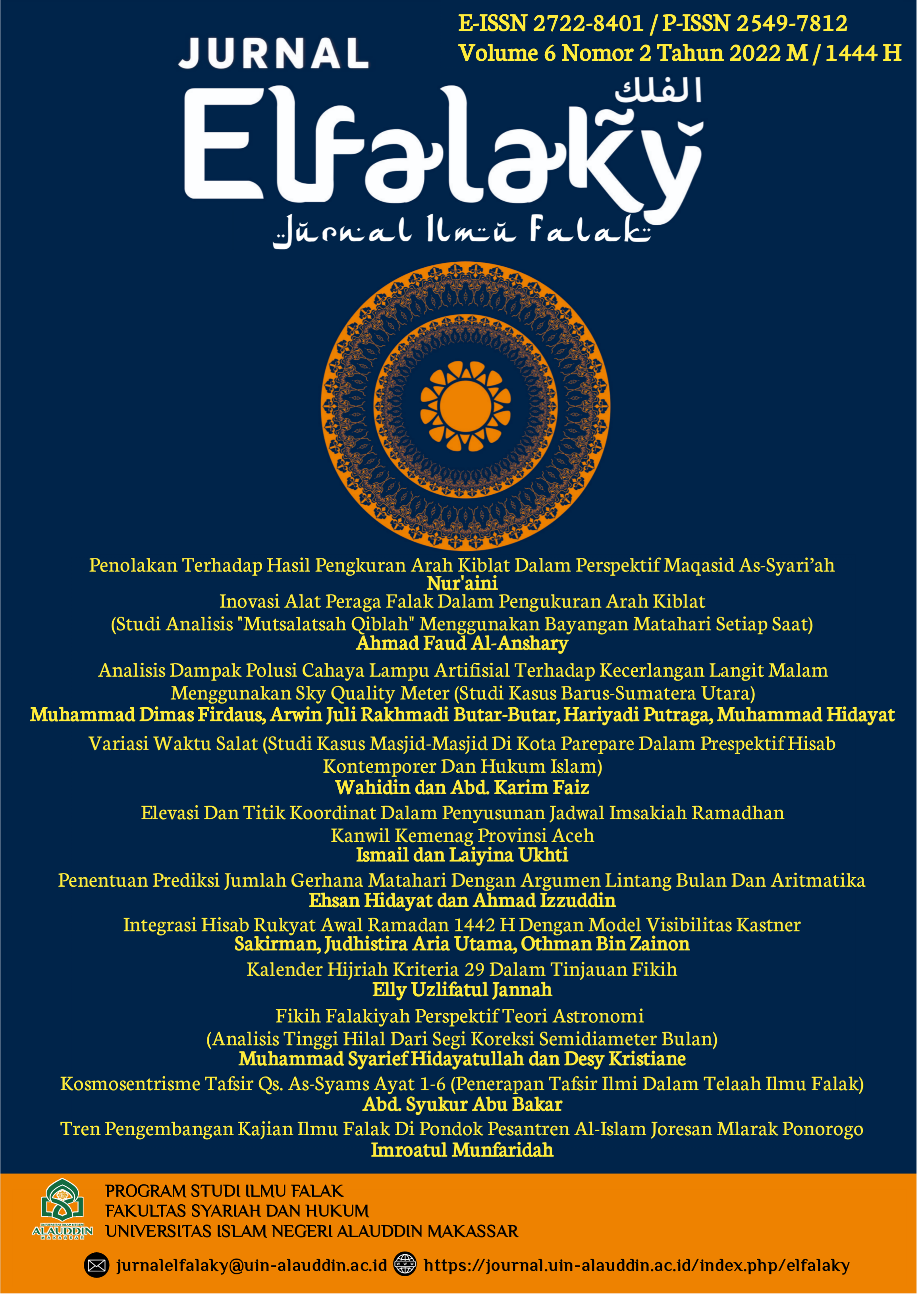ANALISIS DAMPAK POLUSI CAHAYA LAMPU ARTIFISIAL TERHADAP KECERLANGAN LANGIT MALAM MENGGUNAKAN SKY QUALITY METER
Studi Kasus Barus-Sumatera Utara
Abstract
The brightness of the night sky is a necessity in astronomical observations. Sky with minimal light pollution can be optimized for observation and research. Light pollution is an obstacle in astronomical observations, one of the light pollution that affects the night sky a lot is artificial lights that are not properly conditioned. In this study, it is explained how the impact of artificial lights on good sky brightness using the Sky Quality Meter (SQM). By observing several nights, it was found that locations with a lot of light exposure can make the sky brighter ~3.3 times compared to locations with minimal light.
References
Bortle, John E.. (2001). Introducing the Bortle Dark-Sky Scale. Sky and Telescope. Hlm. 126 – 129.
Butar-Butar, Arwin Juli Rakhmadi, dkk.. (2020). Pengukuran Tingkat Polusi Cahaya dan Awal Waktu Subuh di OIF UMSU dengan Menggunakan Sky Quality Meter. Titian Ilmu: Jurnal Ilmiah Multi Sciences. Vol. 12. No. 2 Hlm. 58 - 65.
Butar-Butar, Arwin Juli Rakhmadi, dkk.. (2020). Sky Brightness Measurement for The Construction of The Astronomy Observatory Branch of Universitas Muhammadiyah Sumatera Utara (OIF UMSU) in Barus, Central Tapanuli Regency, Indonesia. Test: Engineering and Management. Vol. 83. Hlm. 6468 – 6474..
Butar-Butar, Arwin Juli Rakhmadi, dkk.. (2021). The Feasibility Study of Barus City as The New Astrotourism Destination from Astronomical and Meteorological Aspect. The International Symposium on Space Science 2021 (ISSS 2021), hlm. 4
D., Niken Katrini, Burhanudin, Hani. (2010). Pengujian Kriteria Kawasan Tertentu terhadap Kompleks Observatorium Bosscha sebagai Dasar Penentuan Bentuk Pengelolaan Kawasan. Jurnal Perencanaan Wilayah dan Kota. Vol. 10 No. 1. Hlm. 1 – 13.
Herdiwijaya, Dhani, Arumaningtyas, E. P.. (2011). Pengukuran Kecerlangan Langit Arah Zenith di Bandung dan Cimahi dengan Menggunakan Sky Quality Meter. Prosidings Seminar Himpunan Astronomi Indonesia. Hlm 3 – 5.
Herdiwijaya, Dhani. (2017). Waktu Subuh: Tinjauan Pengamatan Astronomi. Jurnal Tarjih. Vol. 14. No. 1. hlm. 58.
Nurfarida, Laila, dkk.. (2017). Tingkat Pengetahuan Masyarakat Sekitar Observatorium Mengenai Informasi Polusi Cahaya. Jurnal Kajian Informasi dan Perpustakaan. Vol. 5. No.1. Hlm. 13 – 22.
Qorib, Muhammad, dkk. (2019). Peran dan Kontribusi OIF UMSU dalam Pengenalan Ilmu Falak di Sumatera Utara. Jurnal Pendidikan Islam. Vol. 10. No. 2. Hlm 133 -141.
Rajkhowa, Rasna. (2014). Light Pollution and Impact of Light Pollution. International Journal of Science and Research. Vol. 3. Issue 10. 2014. Hlm. 861 – 867.
Syarif, Muh. Rasywan. Ilmu Falak Integrasi Agama dan Sains. Cet.I; Gowa: Alauddin University Press, 2020.
Zafira, A.. dkk.. (2021). Pemetaan Kecerlangan Langit Malam di Lingkungan Kampus ITERA Berdasarkan Data SQM. Prosiding Seminar Nasional Fisika. Hlm. 329 – 334.





